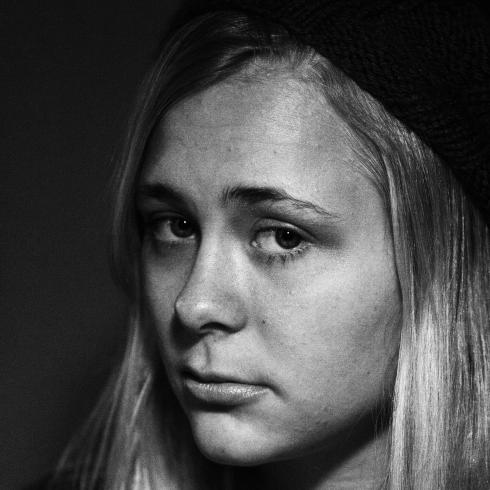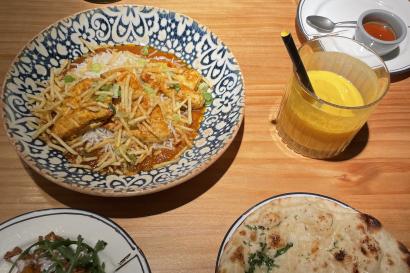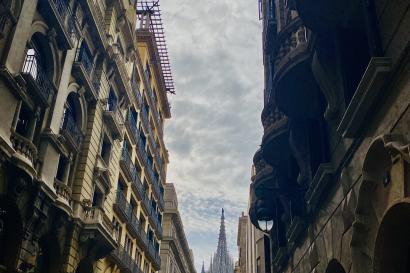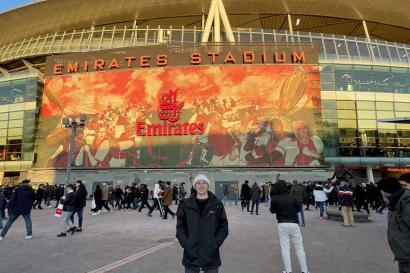A semester abroad is a lot of fun, but it’s not all cafés and museums. The real reason we’re here is to learn! Apart from all the learning we do in our homestays and from the friends we make here, a lot of this new knowledge comes from our classes. One of the things I like best about the IES Salamanca program is that it’s a hybrid: we can choose to take a mixture of classes through the program and through the university here, which gives us access to a huge variety of courses. We can have the experience of taking classes with Spanish students (and other internationals: there are a lot of students here from other parts of the world, many of whom are Europeans on ERASMUS scholarships) and we can also take classes through the program that, while taught completely in Spanish, are more like our classes in our home universities.
The IES professors are all also USAL professors, the only difference between them and their USAL counterparts being that they have more experience working with American students and are therefore well attuned to our strengths and needs and familiar with our learning backgrounds. My favorite part of the IES courses is the required trabajos de campo, in which we visit sites of interest in Salamanca-and in other parts of Spain: we’re headed to Madrid this weekend to visit the Prado and Reina Sofia museums- which helps us get to know our city better.
Yesterday my Spanish Film Noir and Social Reality course did our first field study, the ruta literaria of Salamanca. We started outside the IES center, located in what was formerly the area of prostitution and drug use of the city and now is an expensive and clean neighborhood, and talked about the history of this part of the city.
Much of what we study in Film Noir is related to these criminal and countercultural activities that take place in the peripheries of society, like what took place here before the city expelled the prostitutes and built a state-of-the-art convention center. Next we moved on to the Huerto de Calixto y Melibea, the garden where the story of La Celestina, with a sufficiently tragic ending to be a noir novel or film, has its death scene, and which was built when several local property owners donated part of their private garden space. The trees were in bloom and sunlight filled the space where contemporary lovers mark their commitments to one another with padlocks on the bars of the well in the center of the entrance. Our next stop was at the Cueva de Salamanca behind the cathedral, where the devil himself supposedly taught classes in occult sciences and black magic. When we were done ooh-ing and aah-ing at such a fascinating place we strolled to la Calle de Jesús, where the literature tells us that Don Juan had a duel with the brother of one of his paramours, “a dark and narrow street…”
The Plaza Mayor revelaed itself as even more interesting when we stopped at a plaque commemorating the death of a woman b chance in the street and asking passersby to pray for her soul, which hangs above a red splotch in the stone that is reputed to be a bloodstain. Nearby we saw a second similar plaque, in the Plaza de los sexmeros, marking the place where a man died in the 18th century. What a fascinating and eye-opening way to spend part of a sunny springtime afternoon in Salamanca !










Cailey Oehler
<p><span style="color: rgb(29, 29, 29); font-family: Arial, Verdana, sans-serif; font-size: 12px; line-height: normal; background-color: rgb(237, 237, 237);">I am a junior at Bowdoin College, where I am majoring in Spanish and minoring in Art History and Teaching. I'm outgoing and inquisitive, and getting to know other people is how I make sense of this mixed-up and beautiful world. My favorite hobbies are baking bread, playing ukulele, and camping. I love exploring new places and am looking forward to getting to know Salamanca as well as the fun and challenges I'll encounter in my travels around Europe.</span></p>







